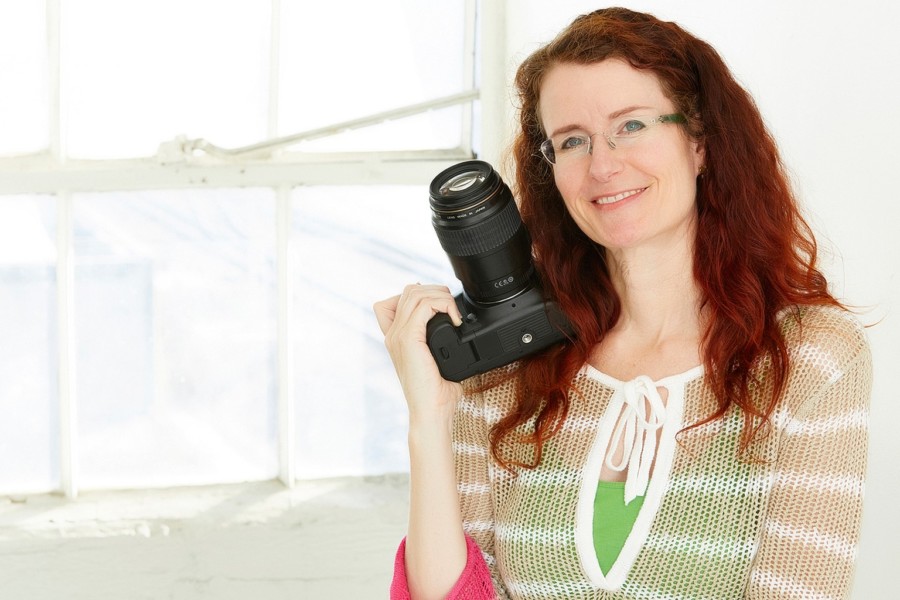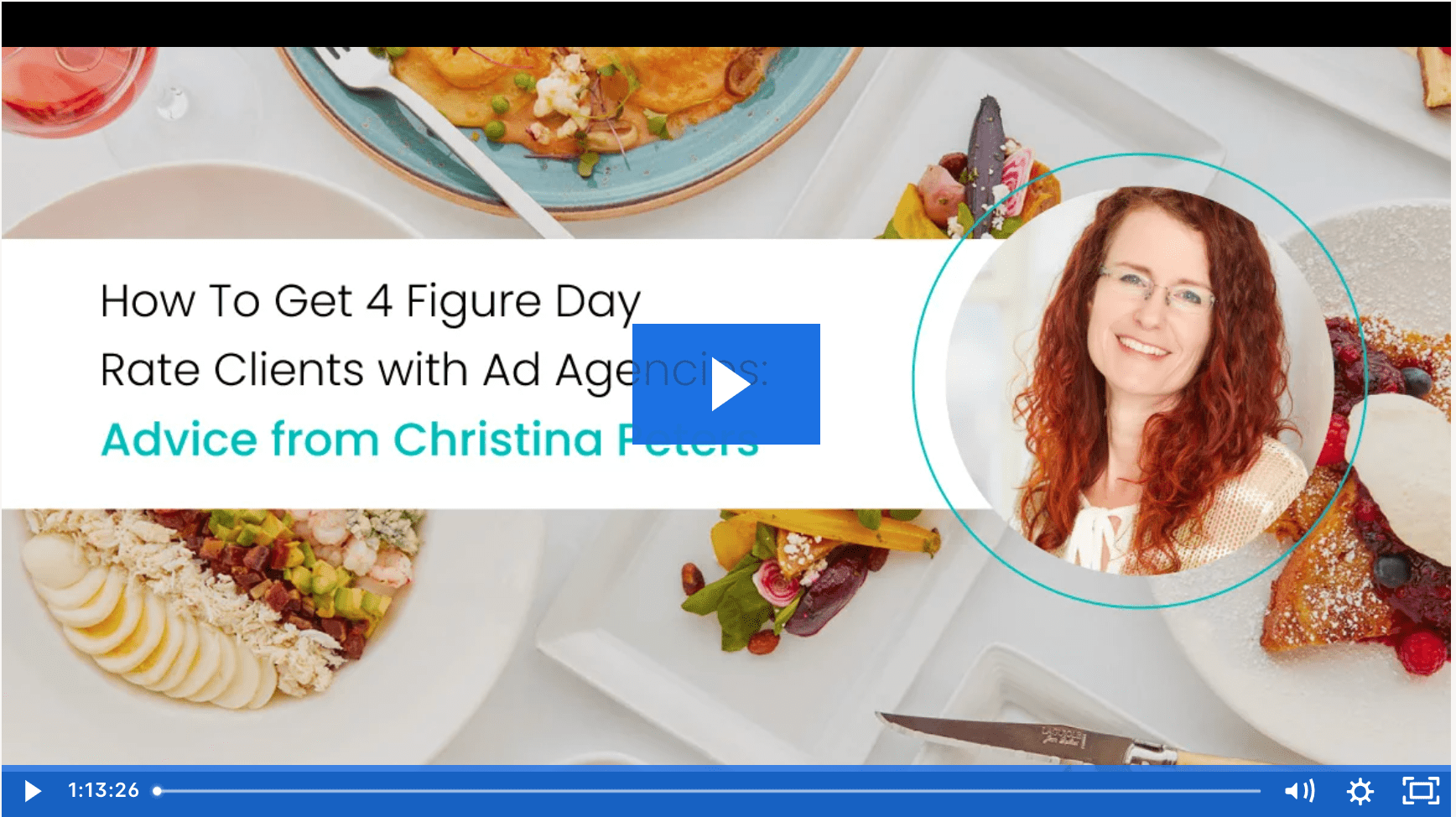Share
WATCH: How to Get Hired by Ad Agencies – Advice from Christina Peters
How do you effectively market yourself to your dream clients? In Part 1 of our free two-part webinar series, food photographer and educator Christi...

How do you effectively market yourself to your dream clients? In Part 1 of our free two-part webinar series, food photographer and educator Christina Peters walks us through her thorough outreach process (not just email!) and outlines a few best practices for building a successful marketing plan.
You’ll walk away with an arsenal of tips and insights that’ll help stand out from your competition and land your next big gig.
Watch to learn:
- How to identify and go after the right people at ad agencies
- Marketing basics and real promo examples
- Why you can still get four-figure day rate agency clients without having millions of followers on social media
On-Demand Webinar: How To Get 4 Figure Day Rate Clients

All your questions answered
Thank you to everyone for submitting questions throughout our conversation with Christina! Read through some of Christina’s answers and watch the video clip below for even more questions we didn’t get a chance to address during the live Q&A. Feel free to tweet any lingering questions @photoshelter.
This Q&A was edited for clarity and length.
When you reach out to large lists of contacts and potential clients via phone, email and postcard, how do you keep track of all of the outreach? What’s your process?
CP: Yeah, let’s talk about that process. First, let’s address the list companies. There are three list companies. They have their own database, so I can keep track of everyone who I’ve emailed on that database when I’m doing larger promotions.
And just a quick caveat, all of the list companies are not accurate. They help you locate brands and agencies, but I do find the contact information is very outdated and half the time, the job titles are wrong.
Now, when I am doing what I call a portfolio tour, or a city tour, then I use Asana. And I have a spreadsheet just for that city. This spreadsheet will probably take me about three days to complete, maybe 30 contacts. That’s how long it takes me to do some of these things.
And so on that spreadsheet, I’ll list out the company, the person, their email, their address and their phone number. Then I have three columns of notes:
What email did I send? (Ex: intro email, follow-up email, and then if I want to show you my book, that’s called book email.) Then I’ll go through and I’ll tag it if I sent the intro, the follow-up, etc.
If it’s a city tour, I want to know when I called them, what day, and if I heard anything back. So on my Asana spreadsheet, I go through and update that. And I have access to that when I’m traveling, too.
For my blanket email promotions that I send out to a lot of people, those will be kept inside the database of the list company that I use. And then for my postcards, I actually have an Excel spreadsheet with all of that information.
So I have a separate section for the postcards, a separate document for the emails, and then I have my Asana spreadsheet for my book tours.
When you’re doing research and you see companies or potential clients produce work that doesn’t fit your style, do you typically get out there try something new, or focus on the clients that match your portfolio?
CP: I think you can absolutely use that to inspire you for new work. Absolutely. We get inspiration from everywhere.
So if this is an agency – and let’s say this is a local agency and you really do want to work with them – then you can absolutely use the type of styles that they use as an inspiration for work.
Then send that to them, and say, ‘I really, really love this campaign that you did. So much so that it inspired me to do this. Thank you so much for creating that work.’ Just be honest about it.
As photographers, as artists, we have to test all the time. All the time. There are so many things that I’ve shot for myself that no one will ever see because it didn’t go so well, but I learned a lot doing it. So testing is absolutely crucial. You’ve got to shoot for yourself and experiment. And at the same time, everything that you test does not mean it ends up in your book.
For more tips and advice from Christina, watch the video below where she answers a handful of questions we weren’t able to address live.
We’ll be updating everyone on how to register for the second webinar with Christina (held on December 4th at 12PM ET) later this week.


